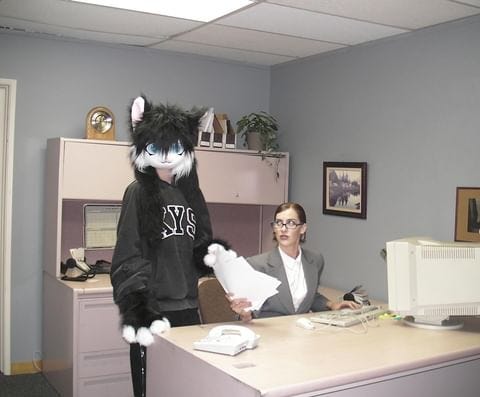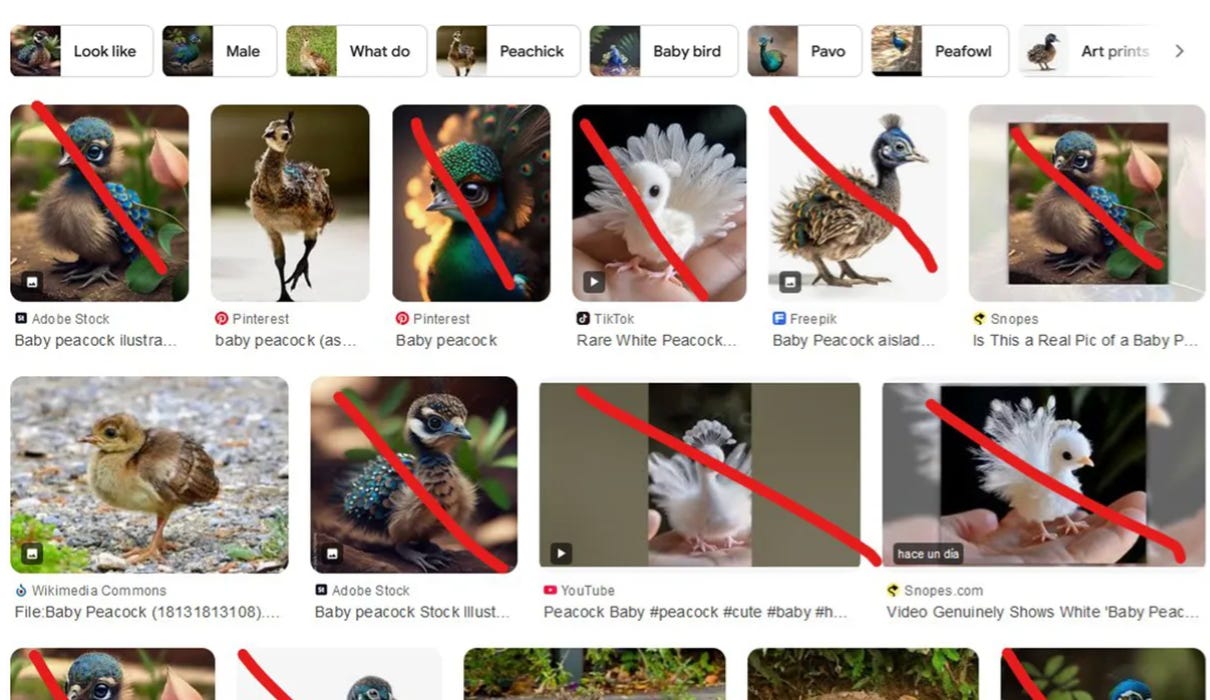When weirdness goes mainstream
How weirdness is taking over the internet as we know it, with Günseli Yalcinkaya
In case you hadn’t already noticed: extreme weirdness is the new norm online. Even the most sanitised corners of our feeds now feature a sprinkling of zombified AI content, a celebrity // alien dupe, or bizarro alt right diet content. Luckily for us, Günseli Yalcinkaya is here to take us through how the hell we got here, and why this may only be just the beginning.
It has never been more popular, or profitable, to be weird. The word began trending in summer this year when Democrats began calling their political opponents weird. JD Vance’s bizarre remarks about “childless cat ladies”. Weird. Elon Musk, the richest man alive, jumping stiffly into the air at Trump’s Pennsylvania rally. Extremely weird. While the political right has long displayed signs of weirdness – think alt-right beliefs in eugenics, raw meat diets and testicle tanning – there’s no denying that between this, and all the seemingly infinite absurdities playing out on our screens, weird discourse is no longer lurking in the fringes – it has entered the mainstream through emerging tech, platform physics and infinite, scrollable atrocities. Or, as one meme accurately puts it:
In a 2023 essay for Zora Zine, I wrote that “anything that exists beyond the borders of our reality is weird.” This is particularly true as we move through what writer Venkatesh Rao calls a “global narrative collapse” to describe the hyper-online tendency to piece together realities based on the rawest information we have access to. “That’s how you know everybody has lost the plot,” he writes. Right now, for example, an image of Hawk Tuah girl as a Tesla bot (see below) is circulating the feed, influencers are live streaming storms instead of GTFO, and video clips of Elon Musk’s army of humanoid robots feel horrifically dystopian amid threats of nuclear war. Nearly all events are disembodied, experienced through a phone screen or ‘simulation pod’, which has the same sensory impact as watching a Netflix show, the hyper-flattening effects of the algorithm juxtaposing totally unrelated bytes of content together, which only fuels the pervasive sense of weirdness. Next up, a baby hippo becomes the unlikely muse of a viral beauty trend, and you can dress as a sexy Ozempic shot for Halloween, both of which are very weird.
The disorientating effects of the algorithm have already been widely covered – but the alternative realities generated by these platforms, through the piecing together of disparate information to construct our own individual truths, don’t just warp politics, or the way we see each other, but literally everything down to our individual style. This was the main topic of Prada’s tastefully chaotic SS25, where the show notes made reference to the surreal and destabilising nature of the algorithm – and finding “logic in a fundamentally illogical world”. With garments inspired by “the algorithmic logic of the internet” and resembling something out of TikTok’s Your Random Outfit Generator, the collection features different eras of clothing coexisting simultaneously together, as well as trompe l’oeil strips of fabric that bend the mind’s eye into thinking that extra garments exist when they don’t. A similar theme could be observed at this season’s Miu Miu runway, which came accompanied by a speculative newspaper, The Truth-less Times, which shone an indirect lens at said global narratives, and our current era of overstimulation and over-information.
Weirdness as an aesthetic can be observed across numerous fashion campaigns, from Illumitati’s weird fashion editorials featuring furries posing next to office sirens (see below) and two-headed doves, to Al***nder W**g’s surreal IG presence, as well as a slew of UFO-themed editorials – Moschino's recent 'Alien Nation' campaign, Bottega Veneta's 'Extraterrestrial Highway' and Nike's crop circles. As an unfamiliar category, interchangeable with terms such as ‘absurd’ or ‘surreal’, weirdness is alluring precisely because it exists outside of our realm of understanding, which opens up all kinds of freaky possibilities. Perhaps ‘weird’ is the perfect embodiment for our current Vibes Economy, it’s intangible and undefinable, which makes it perfectly in sync with social interactions built on aura points, increasingly indecipherable online slang, and meme-y phrases such as, ‘match my freak’. Sometimes I find myself thinking of weirdness as a currency, a tool to cut through the mid, to set us apart from one another in a late-individuality climate that requires the absurd to be unique. Besides, if Hollywood interest in weirdcore series such as The Backrooms or Skibidi Toilet are any indication, weird stuff is profitable – it sells.
“Perhaps ‘weird’ is the perfect embodiment for our current Vibes Economy, it’s intangible and undefinable, which makes it perfectly in sync with social interactions built on aura points, increasingly indecipherable online slang, and meme-y phrases such as, ‘match my freak’”
There is, however, another possible reason for the sudden rise of weirdness in the mainstream, and it comes in the form of generative AI. From AI slop to brainrot, weird content is clogging up our feeds faster than ever. Currently half the internet is occupied by bots, and the numbers are growing, which has created a strange onslaught of AI images in what some are calling the ‘zombie internet’. Last week, a screenshot started doing the rounds after a Google search result for ‘peacock’ generated more AI images than IRL examples (see below), while armies of Twitterbots on X are generating tens of thousands of incoherent posts in response to one another in what I’m referring to as the Shrimp Jesus-ification of online content. Recently, a team of Wikipedia editors has assembled to create ‘WikiProject AI Cleanup’, which describes itself as "a collaboration to combat the increasing problem of unsourced, poorly-written AI-generated content on Wikipedia”, and shows the extent to which AI is altering our perception of the truth in real-time. I admit, sometimes these can be really funny – a personal favourite is a history of a ‘timbery’ Ottoman fortress that never actually existed, or any of the AI muscle cat compilations on TikTok.
“Currently half the internet is occupied by bots, and the numbers are growing, which has created a strange onslaught of AI images in what some are calling the ‘zombie internet’”
But we cannot deny the long term effects of locking into this overwhelming amount of online detritus on a daily basis. An obvious side-effect is everyday existence becoming way freakier, propelled in part by the introduction of new AI tools that incentivise clout-chasing creators to churn out copy-paste gibberish. Granted, the feed already feels like a weirdo funhouse – AI cryptids and Skibidi memes lurk in every corner – but things will only continue to spiral west as hyper-online rhetoric is adopted by the mainstream – see: Walmart brainrot ad or Skibidi Biden. More alarming is the rise of fake, government sanctioned AI images, which have the potential to shape public narratives and twist truths. Or generative AI that can create individually tailored ads to push us deeper into our personalised echo chambers. In case you thought you’ve seen it all, things are about to get a whole lot weirder.
That’s all for this week readers! Until next time.
Words by Günseli Yalcinkaya. Cover image via @HabibiCapital_ on X. Brought to you by @morning.fyi.









This whole article screams Pluto entering Aquarius